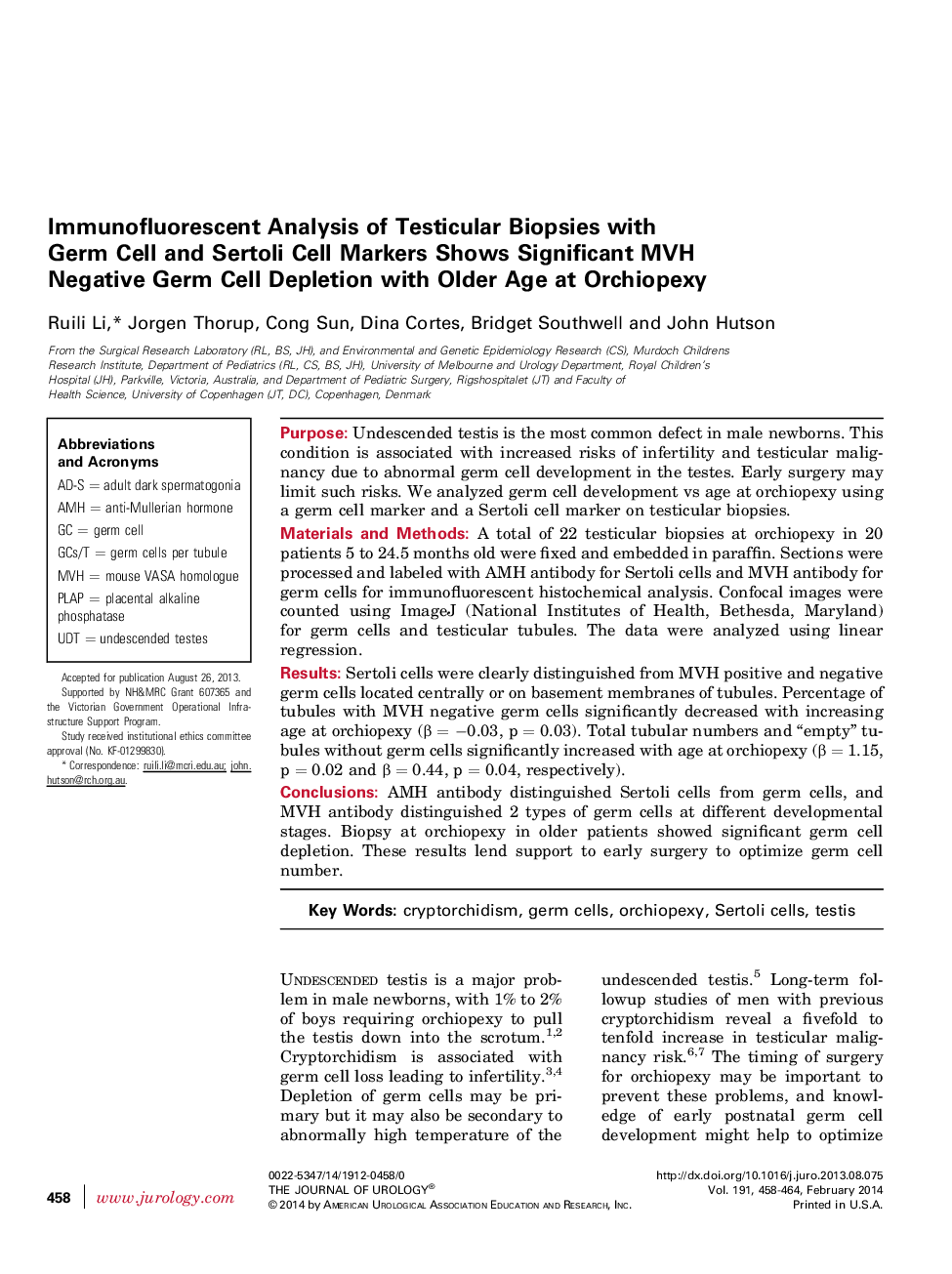| Article ID | Journal | Published Year | Pages | File Type |
|---|---|---|---|---|
| 3863449 | The Journal of Urology | 2014 | 7 Pages |
PurposeUndescended testis is the most common defect in male newborns. This condition is associated with increased risks of infertility and testicular malignancy due to abnormal germ cell development in the testes. Early surgery may limit such risks. We analyzed germ cell development vs age at orchiopexy using a germ cell marker and a Sertoli cell marker on testicular biopsies.Materials and MethodsA total of 22 testicular biopsies at orchiopexy in 20 patients 5 to 24.5 months old were fixed and embedded in paraffin. Sections were processed and labeled with AMH antibody for Sertoli cells and MVH antibody for germ cells for immunofluorescent histochemical analysis. Confocal images were counted using ImageJ (National Institutes of Health, Bethesda, Maryland) for germ cells and testicular tubules. The data were analyzed using linear regression.ResultsSertoli cells were clearly distinguished from MVH positive and negative germ cells located centrally or on basement membranes of tubules. Percentage of tubules with MVH negative germ cells significantly decreased with increasing age at orchiopexy (β = −0.03, p = 0.03). Total tubular numbers and “empty” tubules without germ cells significantly increased with age at orchiopexy (β = 1.15, p = 0.02 and β = 0.44, p = 0.04, respectively).ConclusionsAMH antibody distinguished Sertoli cells from germ cells, and MVH antibody distinguished 2 types of germ cells at different developmental stages. Biopsy at orchiopexy in older patients showed significant germ cell depletion. These results lend support to early surgery to optimize germ cell number.
